Merge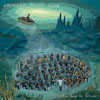
American Music Club triumphantly return after ten years of absence. Foranybody not in-the-know, AMC is much more than Mark Eitzel's piercinglyrics and bleeding vocals: it's Vudi's chaotic guitar, Danny Pearson'sthree-string bass and simultaneous percussive playing acrobatics, TimMooney's shuffling rhtyhms, and Bruce Kaphan's pedal steel and piano(replaced this time around with lap steel by Vudi and piano by newmember Marc Capelle). While Eitzel has recorded and performed solo forthe last ten years, the perfectly paired sounds of the group with hisvoice—the disorder, discomfort, and awe-inspiring beauty—has been sadlymissed. These are sounds of a group which has been such a largeinfluence to so criminally few people. With 1991's
Everclear,AMC perhaps recorded their first perfect album, flawless and intense,(conincidentally released at the time I discovered hard liquor!). Theyupped the stakes with 1993's
Mercury, a bold album of theirbrand of slow yet raw tunes where the group experimented with new waysof composing and recording, all of which fit into a perfect mix. Ofcourse, for their Warner Bros. bosses, it wasn't enough, and I'm surethe pressure was on for them to have a "hit single." 1994's
San Franciscowas probably their most sonically digestible album, primed for popradio, but it didn't feel like everybody was quite on board. Inretrospect, it's no surprise Eitzel was probably frustrated, called ita day, fired everybody, and went solo.
Love Songs for Patriotsopens with Eitzel's voice front stage center, with the familiar soundof AMC's past blasting through like an unstoppable train that'sexploded in a tunnel as the smoke and fire move through, ready to comeout the other end, faster and hotter. The gentle songs like "AnotherMorning," "Love Is," and especially "Myopic Books" are excellentbreathers: sweet, gentle, sandwiched in between the rough and loudsongs, and echo fan favorites like "Last Harbor" and "Jenny."Content-wise, Eitzel's lyrics are as brilliant as they have ever been,with new stories about love and god, almost entirely void of rhymescheme, and requiring intense group therapy for any listener who'sactually paying attention. It's for his lyrics alone that make AMC andEitzel a terrible band to listen to in the car, as a driver needs to bepaying attention to the road, not the male stripper with underwear fullof George Washingtons, the star of the brilliant tune "Patriot'sHeart," or Mark's mom who likes Manhattans, which he says "taste likemouthwash." (Even Kathleen makes her way onto this record!) Like Coilonce were encouraging "deep listening" to delicately layeredinstrumental music, American Music Club is "deep listening" for lyricalcontent, super soaked in emotion with obscure references to reitred popicons, the bible, and idealized Americana. Eitzel is equal parts dramaand comedy and only with AMC do I feel he's truly meeting his match atthe same time, all the time. I look forward to their upcoming tour andhope this isn't just a one-off reunion, as AMC is one of the mostinfluential bands to my own musical taste evolution and maturation.
samples:
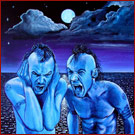 The full 33 minutes of Once in a Full Moon stands as Black Sun Productions finest musical moment to date. This is an ambitious piece of moon music that covers the territory between lunacy, ambition and grace.
The full 33 minutes of Once in a Full Moon stands as Black Sun Productions finest musical moment to date. This is an ambitious piece of moon music that covers the territory between lunacy, ambition and grace.


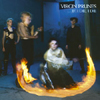 Though it was never recognized as such in its own time, the Virgin Prunes' 1982 debut ...If I Die, I Die truly represented a creative apex of gothic rock. Retrospectively, it's difficult to think of another album that more effectively channeled the decadent perversity, outlandish freakiness and theatrical melodrama that characterized the movement, while avoiding the pitfalls of overwrought self-parody and puerility.
Though it was never recognized as such in its own time, the Virgin Prunes' 1982 debut ...If I Die, I Die truly represented a creative apex of gothic rock. Retrospectively, it's difficult to think of another album that more effectively channeled the decadent perversity, outlandish freakiness and theatrical melodrama that characterized the movement, while avoiding the pitfalls of overwrought self-parody and puerility. In addition to being the first non-Matmos release to surface on Martin Schmidt and Drew Daniel's Vague Terrain label, Unseen Forcesis also the debut release for the San Francisco audiovisual supergroupSagan. While an increasing number of electronic and experimentalartists are defining themselves as "audiovisual," Sagan is one of thefew I've encountered that have released the visual component of theirwork simultaneously to the audio component, thereby assuring that anaudience, beyond those who see a live performance, will be able toexperience their work in a proper context. The group is comprised ofelectronic heavyweights J. Lesser, Blevin Blectum, Jon Leidecker (AKAWobbly) and video artist Ryan Junell. It's an ambitious project thatpays homage to the late Carl Sagan, popular scientist, astronomer, andthe turtlenecked host of the seminal PBS series Cosmos. In wayof tribute to this looming hero of nerds, Sagan the group offers anhour-long excursion into the far-flung realms of the universe,eschewing the kind of glitched-up laptop pranks we might have expectedfrom these three, in favor of an unexpectedly cosmic amalgam ofanalogue synthesizers, field recordings and sample-driven electronica.The three musicians throw everything including the kitchen sink intothese twelve tracks, but somehow distill and process their many inputsinto a cohesive work that cannot be easily compared to anything thathas come before. The press notes try to make the case for a comparisonto 70s kosmische rockers Hawkwind and Vangelis, and while thoseinfluences are certainly present, it's a misleading way to characterizethe sounds on Unseen Forces. In the span of seven minutes,Sagan travel from windswept ambient spacescapes to crunchy rhythms andsquelching computer glitches; from a Gyorgi Ligeti choir of ghostlyvoices to sudden blasts of heavy metal guitar; from shuddering,synth-heavy science-class filmstrips to a jungle full of screechingmonkeys and cawing birds; from Middle Eastern breaks todigitally-obliterated gabbercore trance and subtle atmospheric passagesof tinkling piano. It may sound like a recipe for short-attention-spandilettantism or plunderphonia, but it's actually remarkably focused,and remains very much on the theme of science and that essential aweand wonder inherent in the infinite possibilities of the universe. Asentertaining as the music can be at times, it works even better incontext with the 40-minute video included on the DVD. In a series ofsilly-to-brilliant Viewmaster slide sketches, video artist Ryan Junellilluminates important scientific disoveries. In one of the openingsketches, a vivid illustration of the Big Bang is performed in front ofaudience by a group of flashlight-wielding astronomy enthusiasts in adark room. In the next sketch, M.C. Schmidt and Drew Daniel of Matmosreenact Pausianus' discovery of air as a substance, doubling as a gaypick-up scene in an ice cream parlor. I learned about the contentiouspartnership of early astronomers Tyco Brahe and Johannes Kepler in avery funny sketch involving quiche and a gold-plated nose. In anothermemorable sketch, Lesser and Blectum portray Pierre and Marie Curie,discovering radiation as well as their love for each other. The DVDalso includes six hours of MP3 audio, documenting Sagan's liveperformances. I'm very impressed by the amount of work put into thispackage, and the artists' genuine love and reverence for Carl Sagan andhis beloved scientific method is definitely contagious. It very nearlyqualifies as educational material, on a par with Charles and Ray Eames'The Powers of Ten, or anything that is genuinely able to make learning fun.
In addition to being the first non-Matmos release to surface on Martin Schmidt and Drew Daniel's Vague Terrain label, Unseen Forcesis also the debut release for the San Francisco audiovisual supergroupSagan. While an increasing number of electronic and experimentalartists are defining themselves as "audiovisual," Sagan is one of thefew I've encountered that have released the visual component of theirwork simultaneously to the audio component, thereby assuring that anaudience, beyond those who see a live performance, will be able toexperience their work in a proper context. The group is comprised ofelectronic heavyweights J. Lesser, Blevin Blectum, Jon Leidecker (AKAWobbly) and video artist Ryan Junell. It's an ambitious project thatpays homage to the late Carl Sagan, popular scientist, astronomer, andthe turtlenecked host of the seminal PBS series Cosmos. In wayof tribute to this looming hero of nerds, Sagan the group offers anhour-long excursion into the far-flung realms of the universe,eschewing the kind of glitched-up laptop pranks we might have expectedfrom these three, in favor of an unexpectedly cosmic amalgam ofanalogue synthesizers, field recordings and sample-driven electronica.The three musicians throw everything including the kitchen sink intothese twelve tracks, but somehow distill and process their many inputsinto a cohesive work that cannot be easily compared to anything thathas come before. The press notes try to make the case for a comparisonto 70s kosmische rockers Hawkwind and Vangelis, and while thoseinfluences are certainly present, it's a misleading way to characterizethe sounds on Unseen Forces. In the span of seven minutes,Sagan travel from windswept ambient spacescapes to crunchy rhythms andsquelching computer glitches; from a Gyorgi Ligeti choir of ghostlyvoices to sudden blasts of heavy metal guitar; from shuddering,synth-heavy science-class filmstrips to a jungle full of screechingmonkeys and cawing birds; from Middle Eastern breaks todigitally-obliterated gabbercore trance and subtle atmospheric passagesof tinkling piano. It may sound like a recipe for short-attention-spandilettantism or plunderphonia, but it's actually remarkably focused,and remains very much on the theme of science and that essential aweand wonder inherent in the infinite possibilities of the universe. Asentertaining as the music can be at times, it works even better incontext with the 40-minute video included on the DVD. In a series ofsilly-to-brilliant Viewmaster slide sketches, video artist Ryan Junellilluminates important scientific disoveries. In one of the openingsketches, a vivid illustration of the Big Bang is performed in front ofaudience by a group of flashlight-wielding astronomy enthusiasts in adark room. In the next sketch, M.C. Schmidt and Drew Daniel of Matmosreenact Pausianus' discovery of air as a substance, doubling as a gaypick-up scene in an ice cream parlor. I learned about the contentiouspartnership of early astronomers Tyco Brahe and Johannes Kepler in avery funny sketch involving quiche and a gold-plated nose. In anothermemorable sketch, Lesser and Blectum portray Pierre and Marie Curie,discovering radiation as well as their love for each other. The DVDalso includes six hours of MP3 audio, documenting Sagan's liveperformances. I'm very impressed by the amount of work put into thispackage, and the artists' genuine love and reverence for Carl Sagan andhis beloved scientific method is definitely contagious. It very nearlyqualifies as educational material, on a par with Charles and Ray Eames'The Powers of Ten, or anything that is genuinely able to make learning fun.  American Music Club triumphantly return after ten years of absence. Foranybody not in-the-know, AMC is much more than Mark Eitzel's piercinglyrics and bleeding vocals: it's Vudi's chaotic guitar, Danny Pearson'sthree-string bass and simultaneous percussive playing acrobatics, TimMooney's shuffling rhtyhms, and Bruce Kaphan's pedal steel and piano(replaced this time around with lap steel by Vudi and piano by newmember Marc Capelle). While Eitzel has recorded and performed solo forthe last ten years, the perfectly paired sounds of the group with hisvoice—the disorder, discomfort, and awe-inspiring beauty—has been sadlymissed. These are sounds of a group which has been such a largeinfluence to so criminally few people. With 1991's Everclear,AMC perhaps recorded their first perfect album, flawless and intense,(conincidentally released at the time I discovered hard liquor!). Theyupped the stakes with 1993's Mercury, a bold album of theirbrand of slow yet raw tunes where the group experimented with new waysof composing and recording, all of which fit into a perfect mix. Ofcourse, for their Warner Bros. bosses, it wasn't enough, and I'm surethe pressure was on for them to have a "hit single." 1994's San Franciscowas probably their most sonically digestible album, primed for popradio, but it didn't feel like everybody was quite on board. Inretrospect, it's no surprise Eitzel was probably frustrated, called ita day, fired everybody, and went solo. Love Songs for Patriotsopens with Eitzel's voice front stage center, with the familiar soundof AMC's past blasting through like an unstoppable train that'sexploded in a tunnel as the smoke and fire move through, ready to comeout the other end, faster and hotter. The gentle songs like "AnotherMorning," "Love Is," and especially "Myopic Books" are excellentbreathers: sweet, gentle, sandwiched in between the rough and loudsongs, and echo fan favorites like "Last Harbor" and "Jenny."Content-wise, Eitzel's lyrics are as brilliant as they have ever been,with new stories about love and god, almost entirely void of rhymescheme, and requiring intense group therapy for any listener who'sactually paying attention. It's for his lyrics alone that make AMC andEitzel a terrible band to listen to in the car, as a driver needs to bepaying attention to the road, not the male stripper with underwear fullof George Washingtons, the star of the brilliant tune "Patriot'sHeart," or Mark's mom who likes Manhattans, which he says "taste likemouthwash." (Even Kathleen makes her way onto this record!) Like Coilonce were encouraging "deep listening" to delicately layeredinstrumental music, American Music Club is "deep listening" for lyricalcontent, super soaked in emotion with obscure references to reitred popicons, the bible, and idealized Americana. Eitzel is equal parts dramaand comedy and only with AMC do I feel he's truly meeting his match atthe same time, all the time. I look forward to their upcoming tour andhope this isn't just a one-off reunion, as AMC is one of the mostinfluential bands to my own musical taste evolution and maturation.
American Music Club triumphantly return after ten years of absence. Foranybody not in-the-know, AMC is much more than Mark Eitzel's piercinglyrics and bleeding vocals: it's Vudi's chaotic guitar, Danny Pearson'sthree-string bass and simultaneous percussive playing acrobatics, TimMooney's shuffling rhtyhms, and Bruce Kaphan's pedal steel and piano(replaced this time around with lap steel by Vudi and piano by newmember Marc Capelle). While Eitzel has recorded and performed solo forthe last ten years, the perfectly paired sounds of the group with hisvoice—the disorder, discomfort, and awe-inspiring beauty—has been sadlymissed. These are sounds of a group which has been such a largeinfluence to so criminally few people. With 1991's Everclear,AMC perhaps recorded their first perfect album, flawless and intense,(conincidentally released at the time I discovered hard liquor!). Theyupped the stakes with 1993's Mercury, a bold album of theirbrand of slow yet raw tunes where the group experimented with new waysof composing and recording, all of which fit into a perfect mix. Ofcourse, for their Warner Bros. bosses, it wasn't enough, and I'm surethe pressure was on for them to have a "hit single." 1994's San Franciscowas probably their most sonically digestible album, primed for popradio, but it didn't feel like everybody was quite on board. Inretrospect, it's no surprise Eitzel was probably frustrated, called ita day, fired everybody, and went solo. Love Songs for Patriotsopens with Eitzel's voice front stage center, with the familiar soundof AMC's past blasting through like an unstoppable train that'sexploded in a tunnel as the smoke and fire move through, ready to comeout the other end, faster and hotter. The gentle songs like "AnotherMorning," "Love Is," and especially "Myopic Books" are excellentbreathers: sweet, gentle, sandwiched in between the rough and loudsongs, and echo fan favorites like "Last Harbor" and "Jenny."Content-wise, Eitzel's lyrics are as brilliant as they have ever been,with new stories about love and god, almost entirely void of rhymescheme, and requiring intense group therapy for any listener who'sactually paying attention. It's for his lyrics alone that make AMC andEitzel a terrible band to listen to in the car, as a driver needs to bepaying attention to the road, not the male stripper with underwear fullof George Washingtons, the star of the brilliant tune "Patriot'sHeart," or Mark's mom who likes Manhattans, which he says "taste likemouthwash." (Even Kathleen makes her way onto this record!) Like Coilonce were encouraging "deep listening" to delicately layeredinstrumental music, American Music Club is "deep listening" for lyricalcontent, super soaked in emotion with obscure references to reitred popicons, the bible, and idealized Americana. Eitzel is equal parts dramaand comedy and only with AMC do I feel he's truly meeting his match atthe same time, all the time. I look forward to their upcoming tour andhope this isn't just a one-off reunion, as AMC is one of the mostinfluential bands to my own musical taste evolution and maturation. 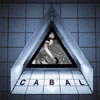 Though Chris Carter and Cosey Fanni Tutti have released a cartload ofalbums since 1981 under their familiar Chris & Cosey banner, Cabalis actually the debut album under their new guise of Carter Tutti. Thissudden switch from their sweetly alliterative Christian names to theirdecidedly more turgid surnames also signals a slight change of musicalstrategy. The music on Cabal is more abstract than past efforts, which were largely beat-driven and contained definite songs. Cabalis still very much recognizable as being the work of Chris and Cosey,with its deep technoid beat constructions and the breathy sexuality ofCosey's vocals, but there is a growing de-emphasis on song structure,and a clear move towards more amorphous and ambient soundscapes.Appropriate to its title, the album seems to exist in a nebuloussubterranean chamber, the musicians swimming lithe and eel-like in somekind of amniotic fluid, sending electrical pulses back and forth inwordless communication. I was immediately reminded of other aquaticallyfixated techno, such as that of the now-defunct Drexciya, or some ofThe Orb's more cohesive efforts. But Carter Tutti's brand of techno isdeep and druggy, shivering and sexual, finding its shape along thesurfaces of the female body. The musicians seem to be equating thesecret intrigue of the title with the labial folds or the dark recessesof the vagina, rising and falling with the rhythms of sexual congress.Dreamlike reverberations are sent careening into the deep echo chamberof each dubby bass rumble. Each track seems to melt into the next,forming one long continuous shape, kept in constant motion byrelentless snaking beat constructions. Each track is thoroughlydrenched in this muted, soft-edged aquatic atmosphere, the occasionalblasts of horn blowing bubbles in the murky depths. Much of the albumis suitably hypnotic, and the nebulous, undefined quality of many ofthe tracks helps to create this trancelike atmosphere. As the albumprogresses towards its conclusion, the tracks become ever more deeper,the frequencies lowering, providing a true test of a sound system'sability to handle rumbling, subterranean bass. The production istop-notch throughout, with each element crisply rendered and coastingacross the stereo channels, providing an immersive psychedelicenvironment that never failed to be complete engaging, sinking intolower and lower depths of hidden underwater chambers. My favoritemoment came on "Passing," when the sudden sad intonations of a droningharmonica provided an indescribably beautiful counterpoint to theheaving bass rumbles and Cosey's manipulated vocal cooing. Cabal is quite possibly the sexiest album I've heard all year.
Though Chris Carter and Cosey Fanni Tutti have released a cartload ofalbums since 1981 under their familiar Chris & Cosey banner, Cabalis actually the debut album under their new guise of Carter Tutti. Thissudden switch from their sweetly alliterative Christian names to theirdecidedly more turgid surnames also signals a slight change of musicalstrategy. The music on Cabal is more abstract than past efforts, which were largely beat-driven and contained definite songs. Cabalis still very much recognizable as being the work of Chris and Cosey,with its deep technoid beat constructions and the breathy sexuality ofCosey's vocals, but there is a growing de-emphasis on song structure,and a clear move towards more amorphous and ambient soundscapes.Appropriate to its title, the album seems to exist in a nebuloussubterranean chamber, the musicians swimming lithe and eel-like in somekind of amniotic fluid, sending electrical pulses back and forth inwordless communication. I was immediately reminded of other aquaticallyfixated techno, such as that of the now-defunct Drexciya, or some ofThe Orb's more cohesive efforts. But Carter Tutti's brand of techno isdeep and druggy, shivering and sexual, finding its shape along thesurfaces of the female body. The musicians seem to be equating thesecret intrigue of the title with the labial folds or the dark recessesof the vagina, rising and falling with the rhythms of sexual congress.Dreamlike reverberations are sent careening into the deep echo chamberof each dubby bass rumble. Each track seems to melt into the next,forming one long continuous shape, kept in constant motion byrelentless snaking beat constructions. Each track is thoroughlydrenched in this muted, soft-edged aquatic atmosphere, the occasionalblasts of horn blowing bubbles in the murky depths. Much of the albumis suitably hypnotic, and the nebulous, undefined quality of many ofthe tracks helps to create this trancelike atmosphere. As the albumprogresses towards its conclusion, the tracks become ever more deeper,the frequencies lowering, providing a true test of a sound system'sability to handle rumbling, subterranean bass. The production istop-notch throughout, with each element crisply rendered and coastingacross the stereo channels, providing an immersive psychedelicenvironment that never failed to be complete engaging, sinking intolower and lower depths of hidden underwater chambers. My favoritemoment came on "Passing," when the sudden sad intonations of a droningharmonica provided an indescribably beautiful counterpoint to theheaving bass rumbles and Cosey's manipulated vocal cooing. Cabal is quite possibly the sexiest album I've heard all year.  Atmospheric tones have always been the trademark of Climax GoldenTwins, and on their latest release the group, who make little effort toidentify themselves beyond their collective name, moves into the moreintimate side of their range. Maybe scoring the feature film Session Ninehad an affect on the band, as the film features one character listeningto old recordings of psychological evaluations; these songs are createdaround acoustic guitars primarily and interwoven with sampledrecordings from over sixty years ago. These samples can be gloriouslysimple, from a conversation to narrative storytelling, or a fathertalking to a child, and when paired with the Twins music andmanipulation they take on a whole new life beyond their quaintbeginnings. Even though the music is quieter and sweeter than otherreleases, there's still an undercurrent of darkness, or maybe just atwinge of mortality here and there. Ominous feelings appear on selectsongs, like the voice at the end of "Every Word in the Bible" or thechild's voice on "Billy McGee McGaw," but these sometimes seemunintentionally so, and the music just seems to fit wherever andwhatever happens. Occasionally, though, like on "Little Noreen," themusic sets the scenario, and in these cases it's almost always asinister undertone. Sparseness is a key element all over, with songsnot extending into grandiose affairs or snarls of noise, just speakingtheir minds with as little words as possible. The album's second trackis the keynote speaker in that regard: called "Upright," the song is avery simple melody played on an upright piano with brushed cymbals, thevery "trick of singularity" as Shakespeare put it. There's littlevocals besides the scratchy recordings, but when there are ("Solid GoldMicrophone," for instance) they fit perfectly, and it's as though it'sa cover of a golden oldie just discovered in grandma's collection,brought forth and updated for the new ears of today. Maybe that's thekey: using technology of today to make songs that could fit somewherelost in time; and that's always seemed to be this group's specialty,never as fully realized until now.
Atmospheric tones have always been the trademark of Climax GoldenTwins, and on their latest release the group, who make little effort toidentify themselves beyond their collective name, moves into the moreintimate side of their range. Maybe scoring the feature film Session Ninehad an affect on the band, as the film features one character listeningto old recordings of psychological evaluations; these songs are createdaround acoustic guitars primarily and interwoven with sampledrecordings from over sixty years ago. These samples can be gloriouslysimple, from a conversation to narrative storytelling, or a fathertalking to a child, and when paired with the Twins music andmanipulation they take on a whole new life beyond their quaintbeginnings. Even though the music is quieter and sweeter than otherreleases, there's still an undercurrent of darkness, or maybe just atwinge of mortality here and there. Ominous feelings appear on selectsongs, like the voice at the end of "Every Word in the Bible" or thechild's voice on "Billy McGee McGaw," but these sometimes seemunintentionally so, and the music just seems to fit wherever andwhatever happens. Occasionally, though, like on "Little Noreen," themusic sets the scenario, and in these cases it's almost always asinister undertone. Sparseness is a key element all over, with songsnot extending into grandiose affairs or snarls of noise, just speakingtheir minds with as little words as possible. The album's second trackis the keynote speaker in that regard: called "Upright," the song is avery simple melody played on an upright piano with brushed cymbals, thevery "trick of singularity" as Shakespeare put it. There's littlevocals besides the scratchy recordings, but when there are ("Solid GoldMicrophone," for instance) they fit perfectly, and it's as though it'sa cover of a golden oldie just discovered in grandma's collection,brought forth and updated for the new ears of today. Maybe that's thekey: using technology of today to make songs that could fit somewherelost in time; and that's always seemed to be this group's specialty,never as fully realized until now.  Anything that can remotely resemble widespread commercial success escaped the Frames for most of their career when their last album, Set List, broke into the Top Ten in their native Ireland. Almost a year later, it was released on these shores as the first album in a new deal with Anti, garnering the band more attention in America as a band to watch intently. Their newest album was released in Ireland several weeks ago, and Anti will release it in the US and Europe in February. Until then, rabid fans can order through select dealers linked on the band's website to absorb the finest work in the band's decade-plus lifespan, as well as their most coordinated and complete effort to date.
Anything that can remotely resemble widespread commercial success escaped the Frames for most of their career when their last album, Set List, broke into the Top Ten in their native Ireland. Almost a year later, it was released on these shores as the first album in a new deal with Anti, garnering the band more attention in America as a band to watch intently. Their newest album was released in Ireland several weeks ago, and Anti will release it in the US and Europe in February. Until then, rabid fans can order through select dealers linked on the band's website to absorb the finest work in the band's decade-plus lifespan, as well as their most coordinated and complete effort to date. The first thing that drew me to Japanese solo artist Takahiro Chiba(aka Slowly Minute) and his first official North American release wasthe connection with Adam Pierce (Mice Parade) and his NYC-based BubbleCore label. Being somewhat familiar with Pierce's unique approach toblending rhythms and music of diverse cultures, I was expectingsomething equally intriguing and exciting from Slowly Minute byassociation. Although not as high energy as Mice Parade, I was quitesurprised and definitely not disappointed. Tomorrow World'snear-raw mix of generic synth sounds, harp samples, hiccupping RolandTR-707 beats, acoustic guitar and piano add a certain charm to its lushyet strong compositions of weaving melodies and quirky arrangements.I'd been listening to this disc almost exclusively on headphones duringdaily commuting, so even the finest of details were apparent from theget-go. From the polyrhythmic programming and looping guitars andweaving keyboard of opener "The Song of the Sun in Autumn's Holiday,"Chiba sets a very relaxing and uplifting tone which carries throughoutmost of the disc. The repetitive guitar arpeggiation and jazzy ridecymbal motif of "Minutes Made!" lays down the foundation for bursts oflow-end synth squelches, distorted guitars and tom-tom rolls to playover and gradually shift into a more straight-ahead number. Thegorgeous "Little Bird" quickly became my favorite; itsBrazilian-flavored nylon string guitar and upright bass set to odd yetplayful machine beats and dense piano/keyboard/harp arrangements. Withits multiple melodic lines and feel changes, it's amazing that Chibamanaged to piece it all together without it sounding cluttered. "It'sthe Girl Who Goes to Do Some Shopping" turns on a dime from itstecho-esque rhythmic keyboard intro to sampled drum fills tofast-forwarded tape chirpings and dance beats. Although Chiba reliesheavily on the generic keyboard and drum machine sounds without muchaltering, what impresses me most about Tomorrow World is hisability to make the simple compositions sound complex and vice versa.Having recently formed The Lopops as a guitarist, I'm anxious to hearthis undeniably talented musician in a group setting or perhaps on afuture Mice Parade recording.
The first thing that drew me to Japanese solo artist Takahiro Chiba(aka Slowly Minute) and his first official North American release wasthe connection with Adam Pierce (Mice Parade) and his NYC-based BubbleCore label. Being somewhat familiar with Pierce's unique approach toblending rhythms and music of diverse cultures, I was expectingsomething equally intriguing and exciting from Slowly Minute byassociation. Although not as high energy as Mice Parade, I was quitesurprised and definitely not disappointed. Tomorrow World'snear-raw mix of generic synth sounds, harp samples, hiccupping RolandTR-707 beats, acoustic guitar and piano add a certain charm to its lushyet strong compositions of weaving melodies and quirky arrangements.I'd been listening to this disc almost exclusively on headphones duringdaily commuting, so even the finest of details were apparent from theget-go. From the polyrhythmic programming and looping guitars andweaving keyboard of opener "The Song of the Sun in Autumn's Holiday,"Chiba sets a very relaxing and uplifting tone which carries throughoutmost of the disc. The repetitive guitar arpeggiation and jazzy ridecymbal motif of "Minutes Made!" lays down the foundation for bursts oflow-end synth squelches, distorted guitars and tom-tom rolls to playover and gradually shift into a more straight-ahead number. Thegorgeous "Little Bird" quickly became my favorite; itsBrazilian-flavored nylon string guitar and upright bass set to odd yetplayful machine beats and dense piano/keyboard/harp arrangements. Withits multiple melodic lines and feel changes, it's amazing that Chibamanaged to piece it all together without it sounding cluttered. "It'sthe Girl Who Goes to Do Some Shopping" turns on a dime from itstecho-esque rhythmic keyboard intro to sampled drum fills tofast-forwarded tape chirpings and dance beats. Although Chiba reliesheavily on the generic keyboard and drum machine sounds without muchaltering, what impresses me most about Tomorrow World is hisability to make the simple compositions sound complex and vice versa.Having recently formed The Lopops as a guitarist, I'm anxious to hearthis undeniably talented musician in a group setting or perhaps on afuture Mice Parade recording. 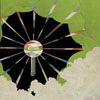 For this band to adopt the name Landing seems like a dash of irony.There is nothing grounded about this band, nothing the least bitindicative that they are or are about to touch the Earth and accept therules and mechanics that govern it. Their sound is one of the sublime,the surreal, more akin to the forces that invisibly hold things aloftand floating than the submission to gravity. "Fluency of Colors"initiates the album's upward motion, each note slipping over anotherand flickering darkly like a dying bulb burning after images intomemory. The music envelops, and what at first seems so delicate andvaporous begins to obscure everything else. Sphereis an album of meditation, of contemplative thought, using thehypnotic, patient bloom of the band's music to instigate a sense ofcalm and focus. Along the course of the album, there are threeinstrumental interludes, each titled "Gravitational." These interludesare the moment of greatest upheaval and dissonance on the album, pointswhere the urge to escape the pull results in stress and tension. Thethree pieces gradually build from the chilly wind-scape of the first tothe creaking buzz of the third. These pieces serve as weights orcounterpoints to the soaring jags the compromise the proper songs."Solstice" shimmers brightly while a stinging updraft of guitar searsthrough the temperate atmosphere. The intensity of the guitar's ascentis almost jarring in contrast to the lightness of the back drop,however the contrast heightens the perception of each elementindividually until ultimately they coalesce together perfectly. Thevery titles of the songs hint at a connection with perception,connection with the sights, sounds, and smells of the world around you.This thread of connection stretches itself between each song and bindstogether the album's experience, linking it to a greater application ofsense and feeling. Sphere would make an excellent album for sinking into thought, escaping the white noise of the mind.
For this band to adopt the name Landing seems like a dash of irony.There is nothing grounded about this band, nothing the least bitindicative that they are or are about to touch the Earth and accept therules and mechanics that govern it. Their sound is one of the sublime,the surreal, more akin to the forces that invisibly hold things aloftand floating than the submission to gravity. "Fluency of Colors"initiates the album's upward motion, each note slipping over anotherand flickering darkly like a dying bulb burning after images intomemory. The music envelops, and what at first seems so delicate andvaporous begins to obscure everything else. Sphereis an album of meditation, of contemplative thought, using thehypnotic, patient bloom of the band's music to instigate a sense ofcalm and focus. Along the course of the album, there are threeinstrumental interludes, each titled "Gravitational." These interludesare the moment of greatest upheaval and dissonance on the album, pointswhere the urge to escape the pull results in stress and tension. Thethree pieces gradually build from the chilly wind-scape of the first tothe creaking buzz of the third. These pieces serve as weights orcounterpoints to the soaring jags the compromise the proper songs."Solstice" shimmers brightly while a stinging updraft of guitar searsthrough the temperate atmosphere. The intensity of the guitar's ascentis almost jarring in contrast to the lightness of the back drop,however the contrast heightens the perception of each elementindividually until ultimately they coalesce together perfectly. Thevery titles of the songs hint at a connection with perception,connection with the sights, sounds, and smells of the world around you.This thread of connection stretches itself between each song and bindstogether the album's experience, linking it to a greater application ofsense and feeling. Sphere would make an excellent album for sinking into thought, escaping the white noise of the mind. 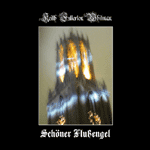 There's something new churning inside the supernatural bones of thesesongs. The world of instrumental evolution and ultra-processed sound isripe with abrasiveness and cosmic dust. While most of what KeithFullerton Whitman releases under his own name is numinous and hazy,there's an extra dose of the dark and unfathomable on Schöner Flußengel. Bits and pieces of Antithesisremain on this record; the album moves via the progression of obviousinstrumentation and recognizable musical elements. The record floats,however, in a way that its predecessor did not. Whitman's melodicmovements are seemingly circular and they build a labyrinthinestructure that lacks no amount of intimidation. "Lixus (VersionAnalogique)" opens the album with the ghastly moan of cymbalsscratching against each other, but the cymbals give way suddenly to aguitar melody that will be repeated later in the album. Lightpercussion highlights this oddly looped melody until strange soundsbegin to shine over it and place it within the context of something fargreater than itself. The guitar falls away into an abyss of heavy andsubtle percussive elements and whale-like echoes. Immediately followingthis thematic opening is a giant hole in the space-time continuum. It'sas though a massive star collapsed in on itself right in the middle ofthis record and left a record of its nature. The massive and meandering"Bewusstseinserweiternd Tonaufnahme (Einer & Zweiter Teile)" is aconfounding piece of recording. Like a mammoth and unmovable monumentdedicated to the ruinous gods of the ancient world, it towers over therest of Schöner Flußengel and establishes the tone that comesto dominate the record. At various points in this song I'm quite surethat it is the moan of devilish monks I'm hearing reverberate throughthe morbidly decorated architecture of an unholy church. The dark,all-consuming sound continues up and until "Lixus (Version Numerique)"and the closing "Weiter." The guitar theme from the opening trackreturns and is now complimented by a host of obscene sounds and starryshrieks. Distortion stumbles back and forth, bleating and honking inshort bursts and adding a fullness that was missing from "Lixus(Version Analogique)." Instead of fading into nothingness, however, thewave of guitar and alien gasps resolves itself into a stunning displayor synthetic orchestras and rhythmic, digital crashes. A piano ormodified organ sound (sometimes even sounding like a strange guitar)rotates through a series of patterns, both percussive and melodic innature, which creates a beautiful stream of artificial chamber music.Slowly the baroque style of the piece transforms into a seemingly liveperformance inside an imagined temple with its roof open to theterrifying vacancy above. The bizarre and grotesquely hypnoticqualities it harbors provide a mysterious aura around it that makesrepeated listens necessary and the record more enjoyable each timethrough. -
There's something new churning inside the supernatural bones of thesesongs. The world of instrumental evolution and ultra-processed sound isripe with abrasiveness and cosmic dust. While most of what KeithFullerton Whitman releases under his own name is numinous and hazy,there's an extra dose of the dark and unfathomable on Schöner Flußengel. Bits and pieces of Antithesisremain on this record; the album moves via the progression of obviousinstrumentation and recognizable musical elements. The record floats,however, in a way that its predecessor did not. Whitman's melodicmovements are seemingly circular and they build a labyrinthinestructure that lacks no amount of intimidation. "Lixus (VersionAnalogique)" opens the album with the ghastly moan of cymbalsscratching against each other, but the cymbals give way suddenly to aguitar melody that will be repeated later in the album. Lightpercussion highlights this oddly looped melody until strange soundsbegin to shine over it and place it within the context of something fargreater than itself. The guitar falls away into an abyss of heavy andsubtle percussive elements and whale-like echoes. Immediately followingthis thematic opening is a giant hole in the space-time continuum. It'sas though a massive star collapsed in on itself right in the middle ofthis record and left a record of its nature. The massive and meandering"Bewusstseinserweiternd Tonaufnahme (Einer & Zweiter Teile)" is aconfounding piece of recording. Like a mammoth and unmovable monumentdedicated to the ruinous gods of the ancient world, it towers over therest of Schöner Flußengel and establishes the tone that comesto dominate the record. At various points in this song I'm quite surethat it is the moan of devilish monks I'm hearing reverberate throughthe morbidly decorated architecture of an unholy church. The dark,all-consuming sound continues up and until "Lixus (Version Numerique)"and the closing "Weiter." The guitar theme from the opening trackreturns and is now complimented by a host of obscene sounds and starryshrieks. Distortion stumbles back and forth, bleating and honking inshort bursts and adding a fullness that was missing from "Lixus(Version Analogique)." Instead of fading into nothingness, however, thewave of guitar and alien gasps resolves itself into a stunning displayor synthetic orchestras and rhythmic, digital crashes. A piano ormodified organ sound (sometimes even sounding like a strange guitar)rotates through a series of patterns, both percussive and melodic innature, which creates a beautiful stream of artificial chamber music.Slowly the baroque style of the piece transforms into a seemingly liveperformance inside an imagined temple with its roof open to theterrifying vacancy above. The bizarre and grotesquely hypnoticqualities it harbors provide a mysterious aura around it that makesrepeated listens necessary and the record more enjoyable each timethrough. - 
